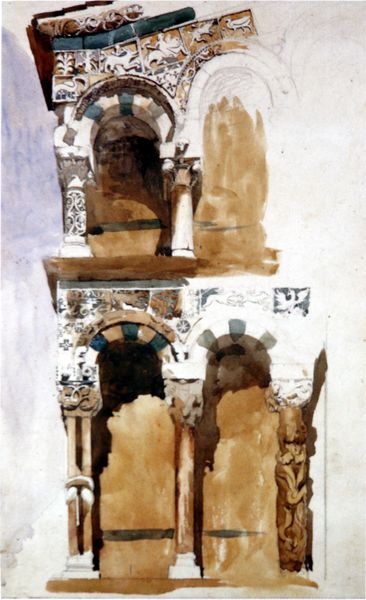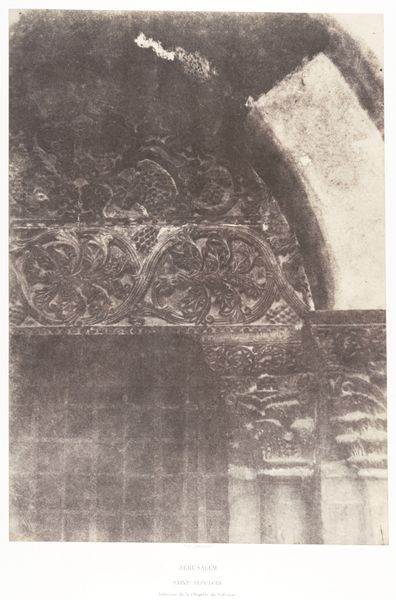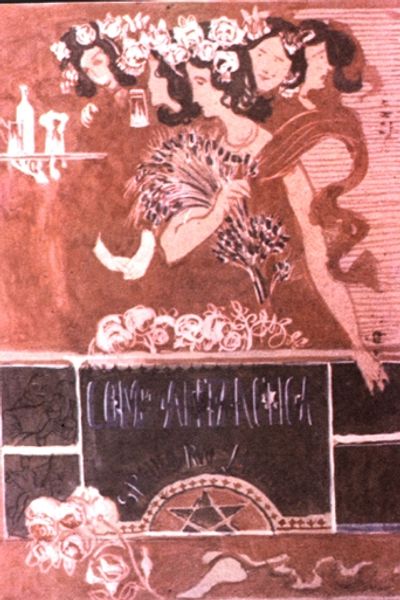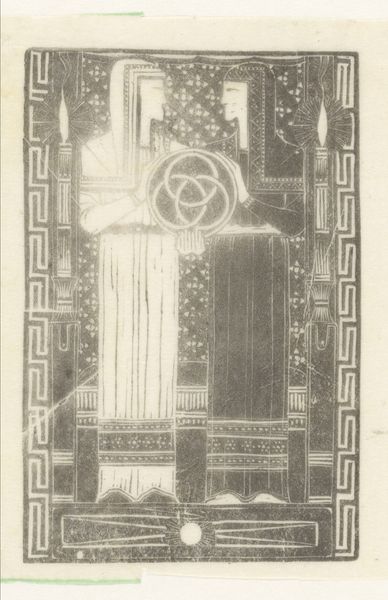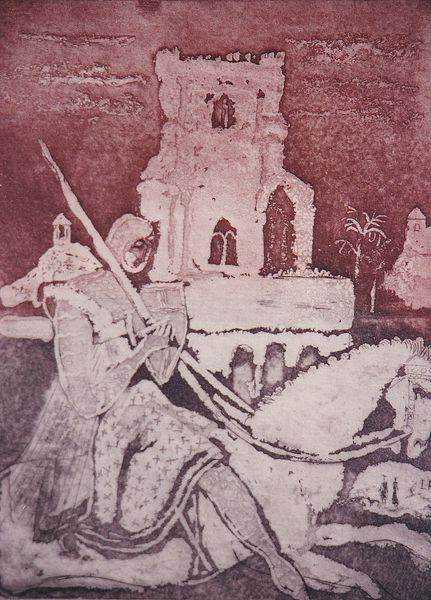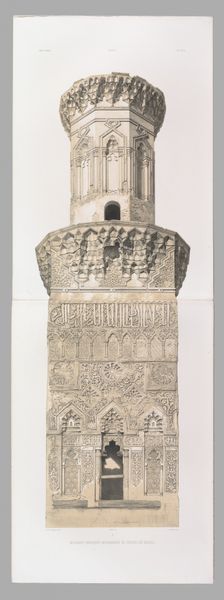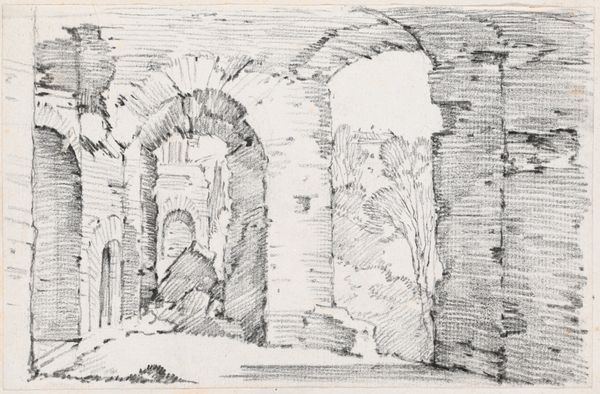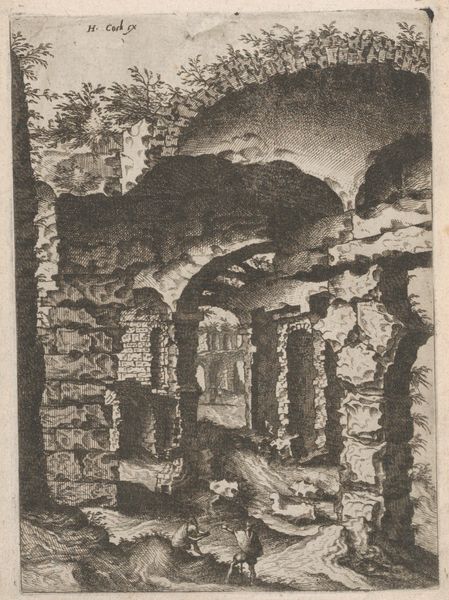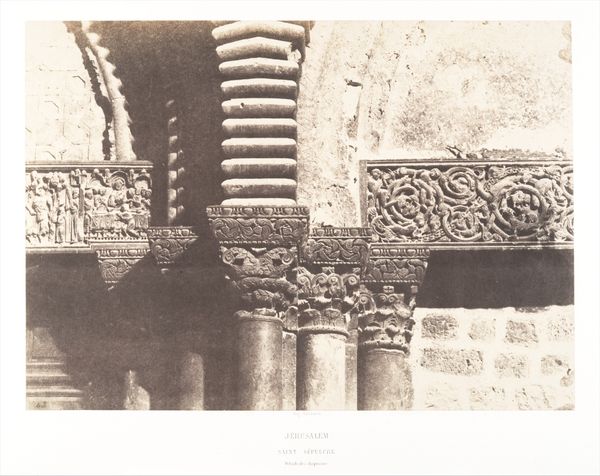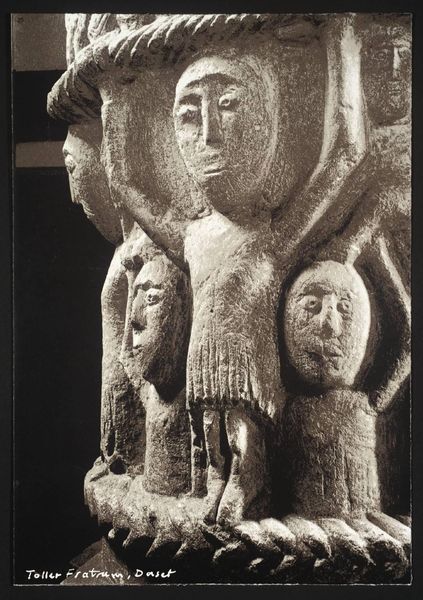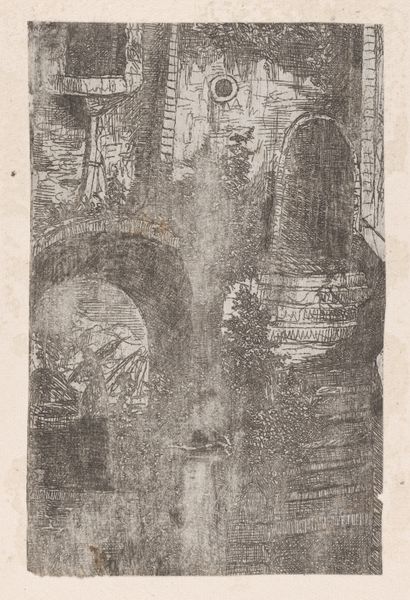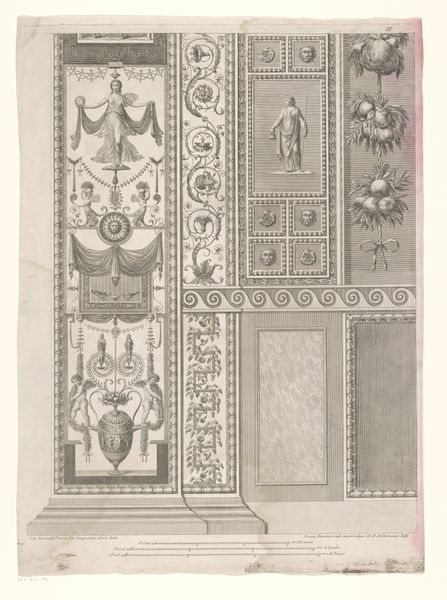
drawing, ink, architecture
#
drawing
#
medieval
#
sculpture
#
romanesque
#
ink
#
black and white
#
arch
#
line
#
architecture
#
monochrome
Copyright: Public domain
Curator: John Ruskin created this drawing, "Arch from the Façade of the Church of San Michele," in 1849. Editor: It's immediately striking how solid and permanent it appears, even in this monochromatic rendering. There's such strong contrast. Curator: The church itself provides an interesting perspective on 19th-century historicism, drawing heavily from the medieval Romanesque style, with that emphasis on round arches and weighty construction, reflecting broader spiritual and political revivals of the era. How interesting to consider that, even rendered through ink and line work. Editor: Indeed. Look at the layering of the materials that is achieved. The ink simulates stone, mortar, labor - what feelings come through? Is this a reflection on what endures and what is temporal, like us? I wonder, how does his chosen media connect with the themes and techniques in medieval and Romanesque design? Curator: In many ways it mirrors them. The highly stylized, almost symbolic animal and floral depictions resonate deeply with Romanesque sculpture traditions. He understood that architecture wasn't just stone, but it was narrative and a way of relating the population with powerful symbolism. It really echoes an earlier period, where structures were teaching tools. Editor: Right, it all returns to how the labor of creating something mirrors the meaning the something embodies. Consider the actual, physical layering that the structure performs... I am fascinated by the material choices, like that heavy use of line and its function as tone and volume. The physical arch becomes metaphysical. Curator: And Ruskin's style reflects that commitment. He championed a return to Gothic principles of craftsmanship, criticizing the industrial methods of his day. So for Ruskin it seems he also wanted to remind the people in his day how craft brings meaning. He's imbuing it with a powerful cultural and historical perspective. Editor: His labor making the piece invites us to dwell on not only Romanesque materiality, but also its cultural purpose. Thank you. Curator: Thank you. Examining that through our lens has brought forward fascinating layers.
Comments
No comments
Be the first to comment and join the conversation on the ultimate creative platform.
